This article covers
The overview of the Cori cycle
The Cori cycle (also known as the lactic acid cycle or glucose lactate cycle) is a metabolic pathway done by the collaboration between our muscles and liver.
During exercise, the muscles generate lactate as a byproduct of anaerobic respiration. These lactates will be transported through the bloodstream to the liver and are converted back to glucose molecules. Renewed glucose returns to the muscles and is cyclically metabolized back to lactate for more energy.
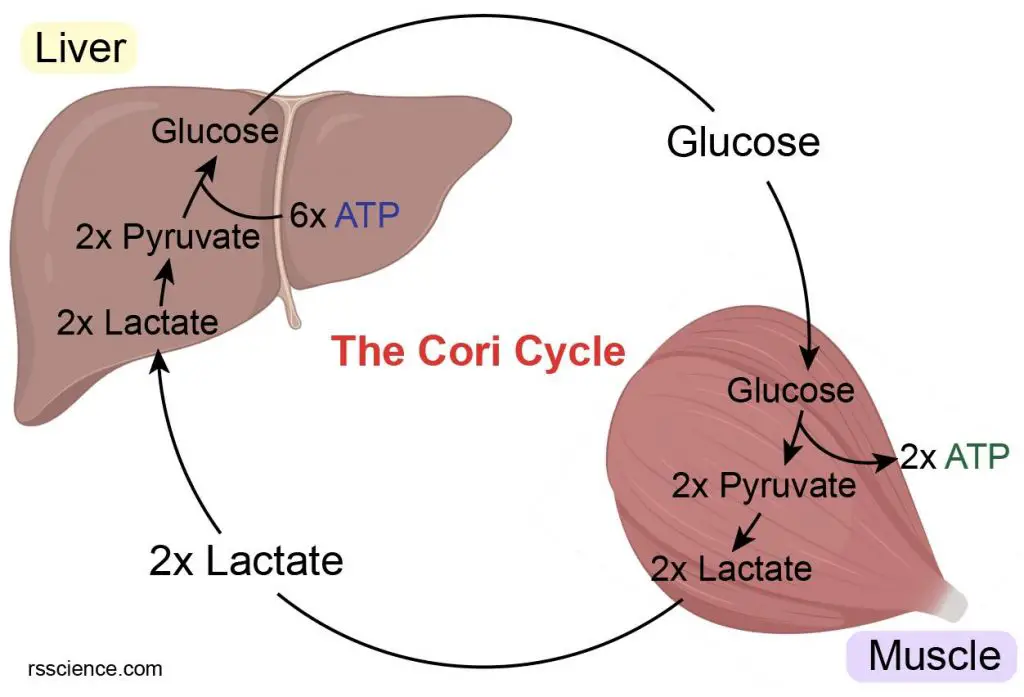
[In this image] The Cori cycle is a biochemical process in which glucose is converted to lactate in the muscles, and then this lactate is re-converted to glucose in the liver.
How do cells produce energy?
Glycolysis and mitochondrial respiration are two major energy-generating mechanisms in our cells.
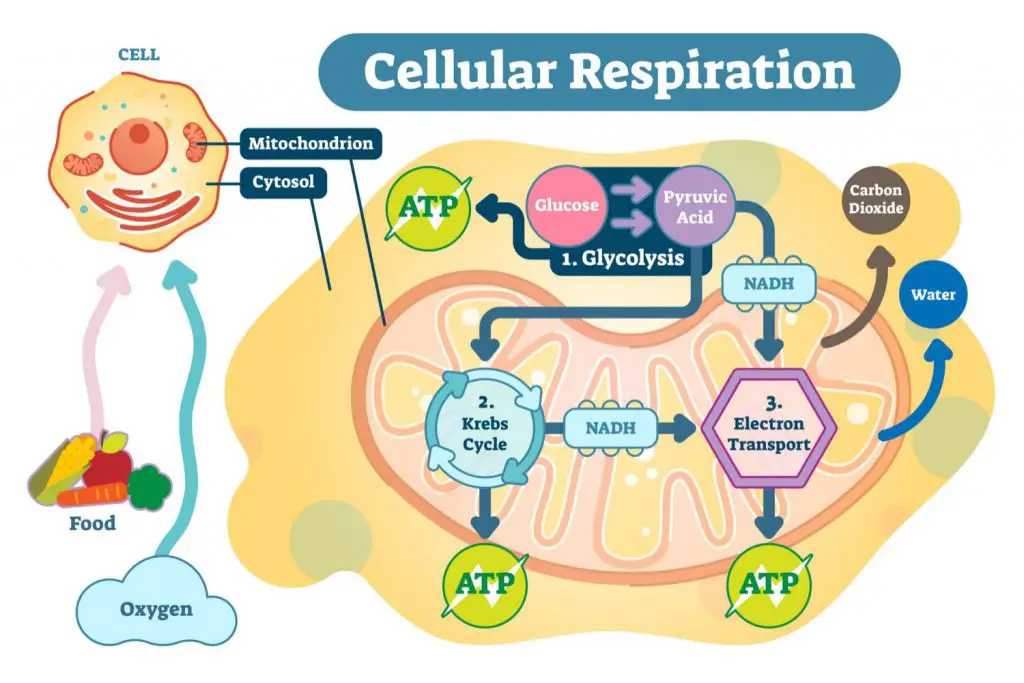
[In this image] The overview of Cellular respiration: One glucose molecule as the fuel can generate 36-38 ATP (glycolysis = 2; Krebs cycle = 2; OXPHOS = 32-34) through complete aerobic respiration (in the presence of oxygen). If oxygen is insufficient, anaerobic respiration (only glycolysis) can only produce 2 ATP.
Photo credit: Thoughtco.com
Our cells require glucose (the basic form of carbohydrates) for energy. Glycolysis is the process by which glucose is broken down to form pyruvate in the cytoplasm. One glucose can produce two ATP molecules in glycolysis. ATP or adenosine triphosphate is the biochemical energy “currency” of the cell to do any cellular activities.
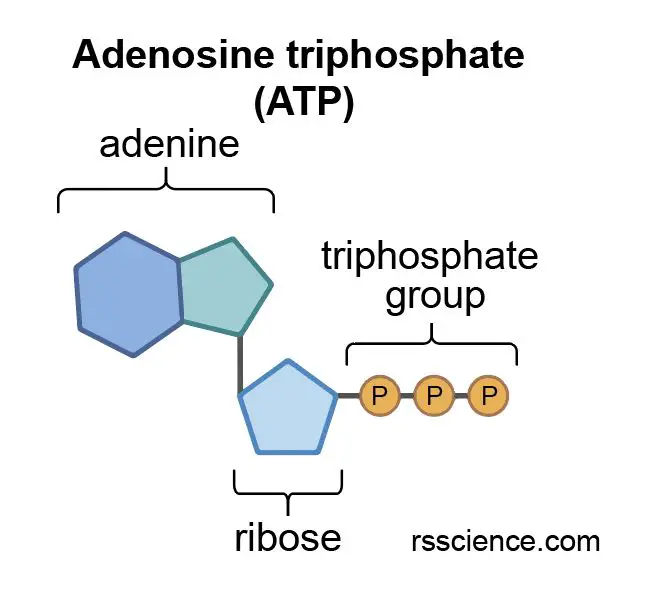
[In this image] Adenosine triphosphate (ATP) is an organic compound that provides energy to drive almost all processes in living cells. ATP is often referred to as the “molecular unit of currency” inside the cells.
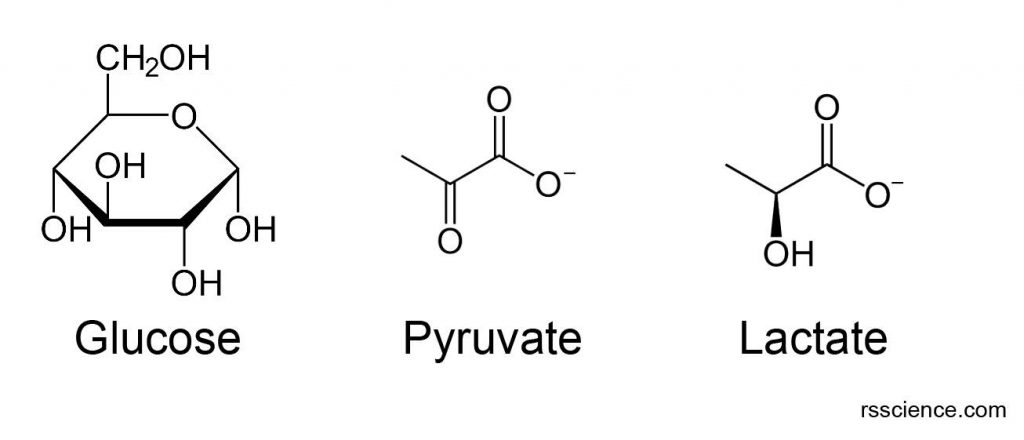
[In this image] Chemical structures of glucose, pyruvate, and lactate.
Under aerobic conditions (meaning oxygen is sufficient), pyruvate can diffuse into mitochondria, where it enters the citric acid cycle (or Krebs cycle) and electron transport chain to generate more ATP molecules. Mitochondrial respiration is the most economical way of using glucose as a fuel, efficiently extracting the maximal energy from carbohydrates.
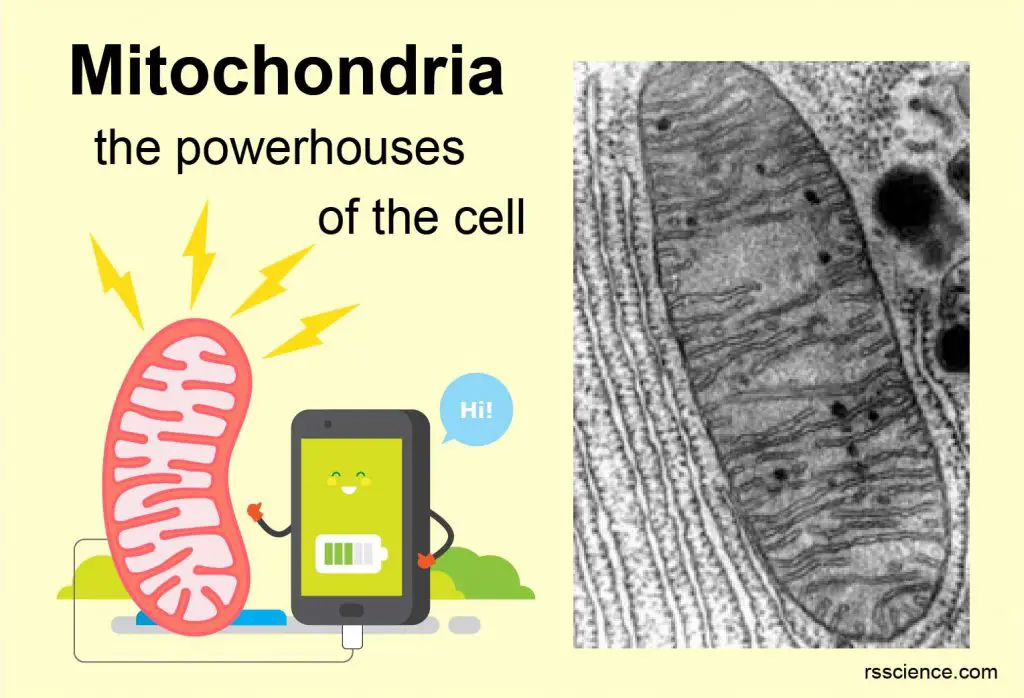
Read more about “Mitochondria – the powerhouses of the cell”
If the oxygen supply is limited (anaerobic conditions), cells will use pyruvate for fermentation and produce lactic acids or lactates. This glycolysis respiration can produce energy quickly (only 2 ATP) for intensive demands, but less efficiently than mitochondrial respiration (total 36-38 ATP).
Muscles produce lactates by anaerobic glycolysis
Muscles generate force needed for all our daily activities, including walking, standing, running, and lifting weights. Energy is needed to generate this type of force.
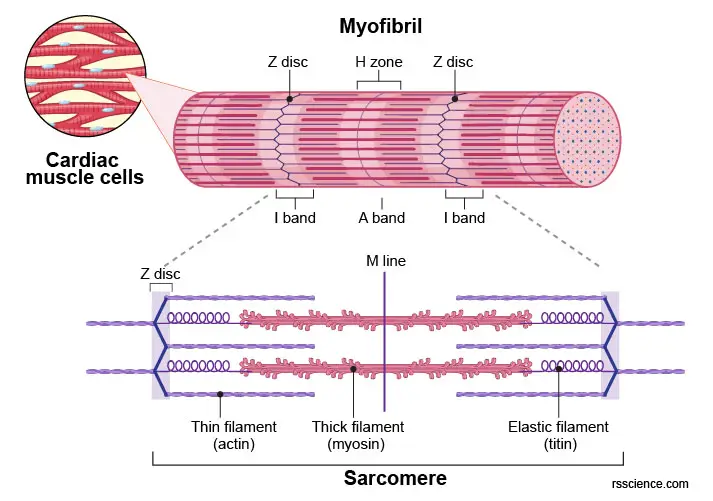
[In this image] Muscles generate force by contracting the myofibrils, which consume a lot of ATP.
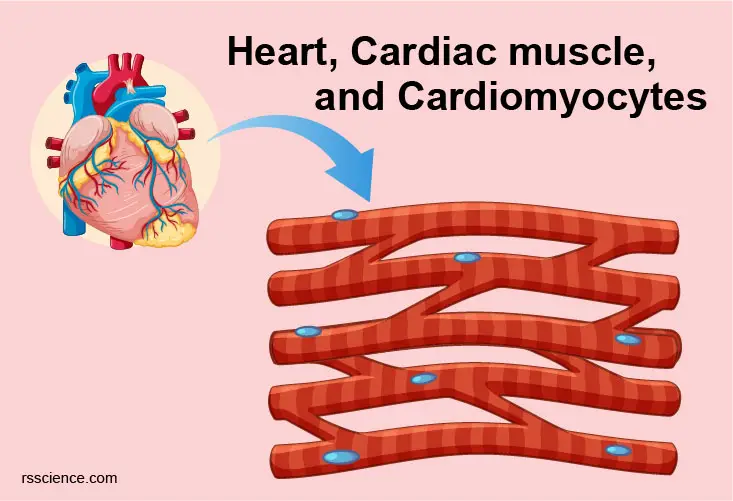
Learn more about muscle cells.
In actively contracting muscles, the energy demands of muscle cells are high, but the oxygen supply is limited. As a result, muscle cells utilize glycolysis to catch up with the energy demands and leave many lactates behind. During intense exertion, cells will also utilize glycogen that stores in the muscle to produce pyruvate. This contributes even more to the production of lactate in the cells.
The muscle cells can produce energy anaerobically at very high rates, but only for a short period. When lactate accumulation becomes excessive, it leads to fatigue.
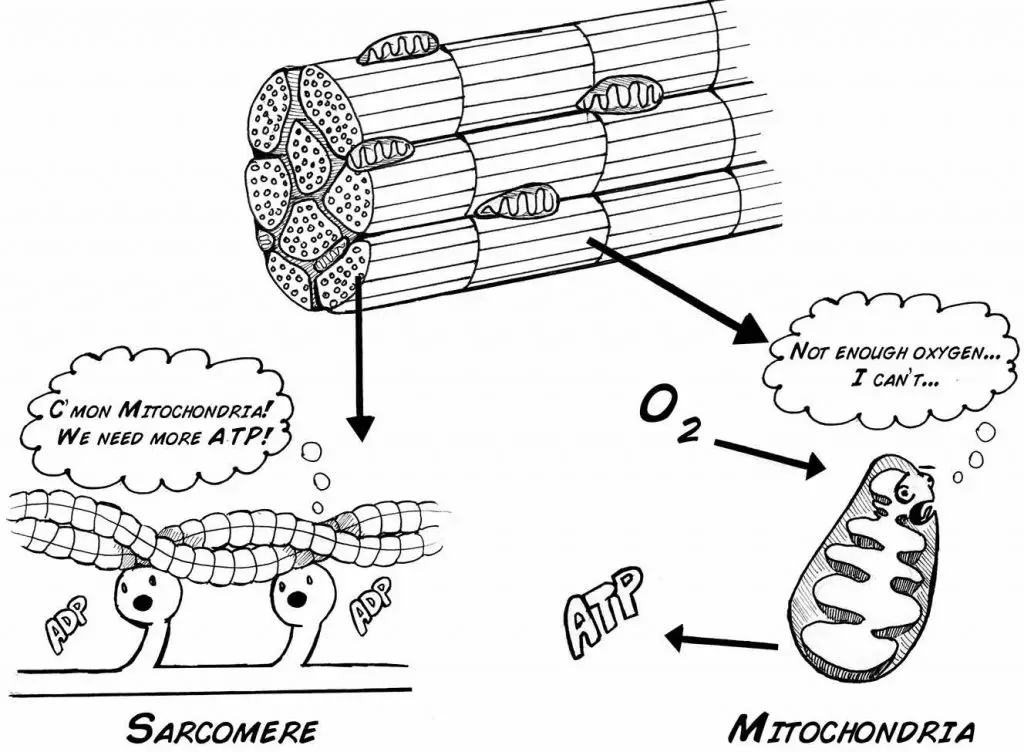
[In this image] Since oxygen isn’t available in actively contracting muscles, their mitochondria can’t help to produce ATP. Muscles must do anaerobic contraction, meaning “not using oxygen.”
Image credit: backyard brains
Does lactic acid or lactate cause muscle soreness? The answer is No. Although the accumulation of lactate does drop cellular pH and cause temporary burn, lactate is not responsible for muscle soreness following intense exercise.
Liver recycles lactate and synthesizes glucose
Lactate cannot be utilized by the cell so it is transferred out of the cell into the bloodstream. To get rid of the lactate, our body adopts an alternative metabolic route, called Cori cycle.
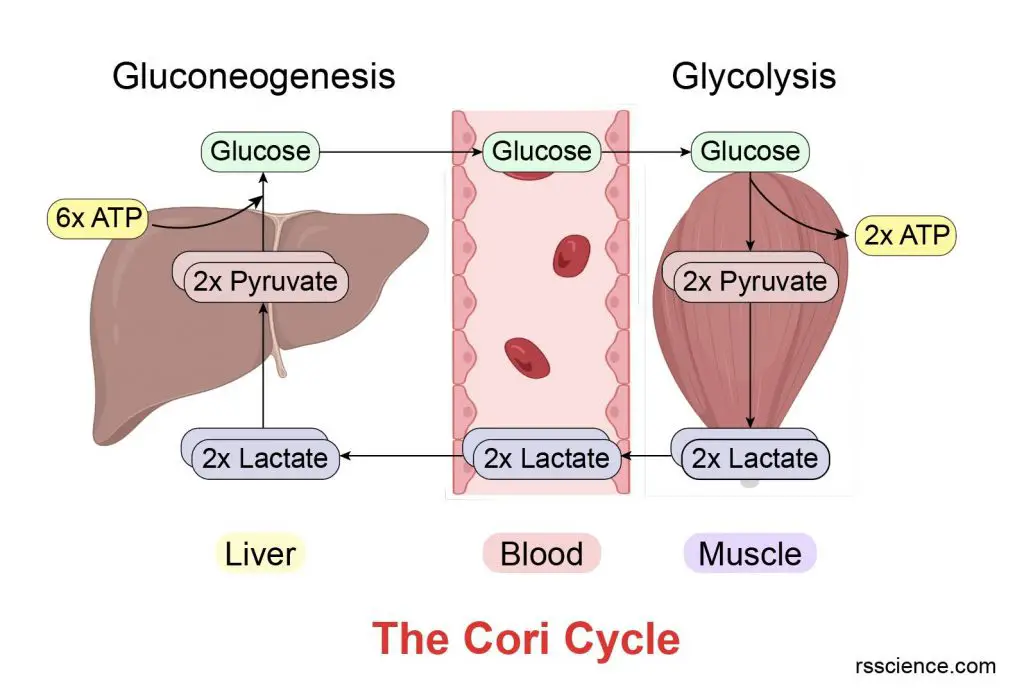
[In this image] The Cori cycle links anaerobic glycolysis in muscle tissue to gluconeogenesis in the liver. The lactate secreted by the muscle cells is transported by the bloodstream to the liver, where it is converted into glucose via gluconeogenesis.
The liver picks up the lactate from the bloodstream into liver cells or hepatocytes. Liver cells perform a chemical process known as gluconeogenesis, to convert lactate back to glucose. The renal cortex (the outer part of the kidney) also carries about a portion of gluconeogenesis.
Essentially, gluconeogenesis reverses both the processes of glycolysis and fermentation that the body had performed to produce lactate. This first converts lactate to pyruvate, and then finally into glucose.
Renewed glucose is then released into the bloodstream and shipped back to the working muscles, where it is used to feed the additional energy demands of the muscles. The liver again takes up the subsequent lactate production by the muscles, and thus the Cori cycle resumes.
If the demands in muscles decrease, the glucose generated in the Cori cycle can be converted by glycogenesis to replenish the glycogen stored in the muscles.
Do other cells involve in the Cori cycle?
In addition to skeletal muscle cells, several other cell types also actively produce lactate.
Examples are:
- Red blood cells
- Immune cells in the lymph nodules
- Proliferating immune and blood cells in the bone marrow
- Epithelial cells in the skin.
By the way, muscle cells produce lactate even at rest, although at a low rate.
Cancer cells are known to use glycolysis as a means of energy production regardless of whether they are under low or high oxygen conditions. This metabolic shift, called the Warburg effect, explains why cancer cells can grow notoriously fast by depleting the nutrients from the surrounding organs. This is also the reason why cancer patients experience progressive weight loss.
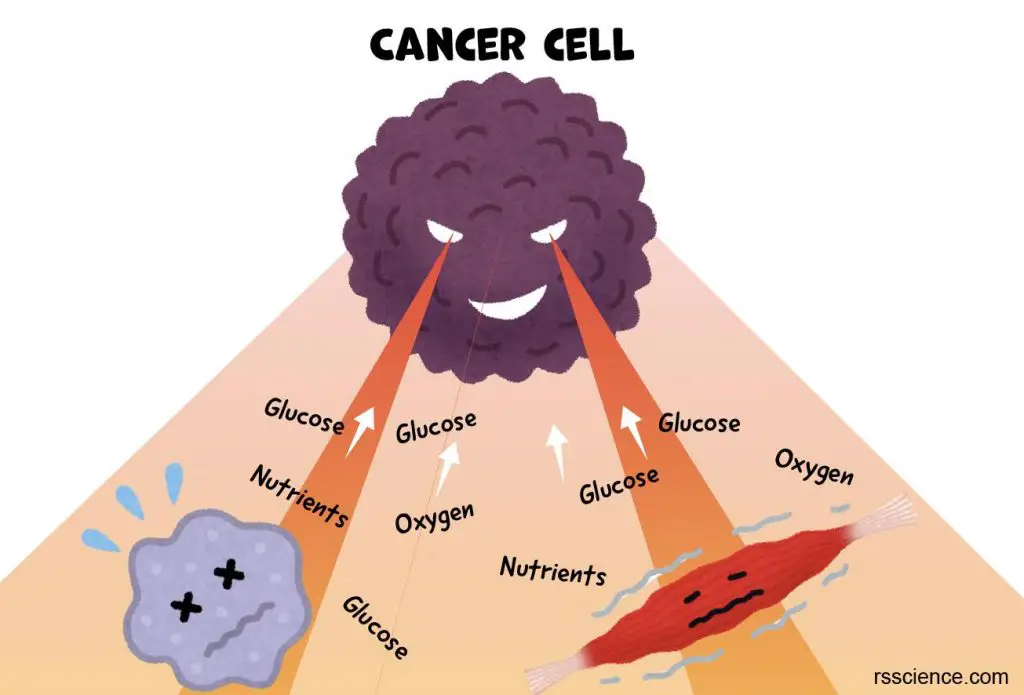
[In this image] Cancer cells plunder the nutrients from surrounding cells and tissues to sustain the rapid growth of tumors.
Energy cost of the Cori Cycle
The continuous breakdown and resynthesis of glucose in the Cori cycle might seem like a waste of energy. A Cori cycle indeed results in a net consumption of 4 ATP. The calculation is:
- The glycolytic part (one glucose → 2 pyruvates → 2 lactate) of the Cori cycle produces only 2 ATP per molecule of glucose.
- The gluconeogenesis to resynthesize a glucose (2 lactate → 2 pyruvates → one glucose) consumes 2 GTP and 4 ATP, which is equal to 6 ATP.
- The net cost is 6-2 = 4 ATP. The mitochondrial respiration of liver cells provides this consumption.
Therefore, more energy is required to produce glucose from lactate than that obtained by anaerobic glycolysis. This explains why the Cori cycle cannot be sustained indefinitely.
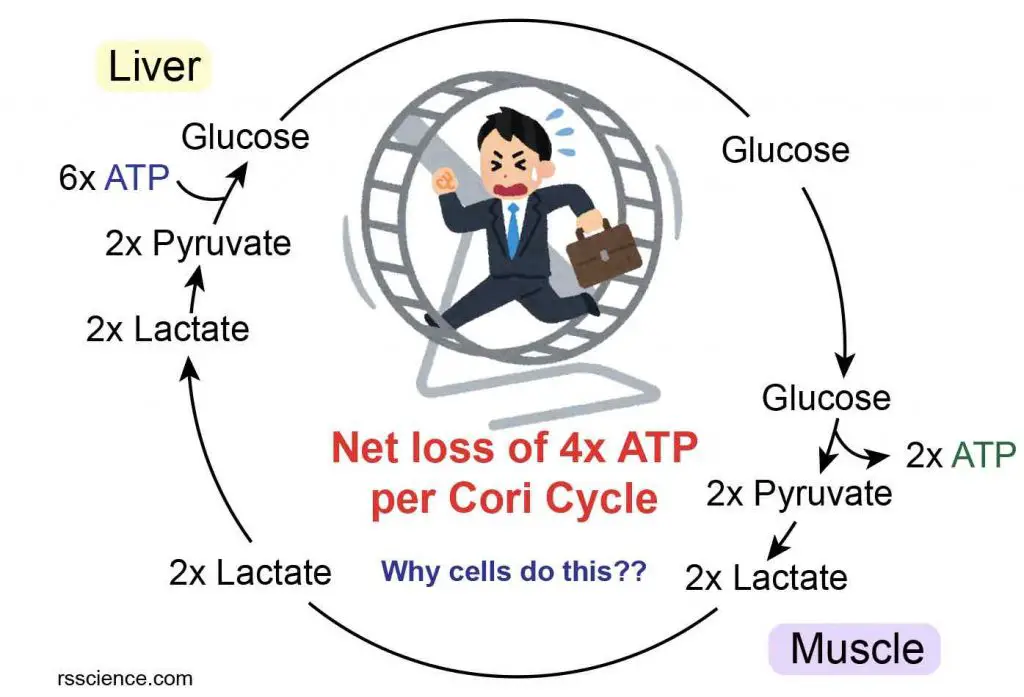
[In this image] The Cori cycle results in a net ATP loss. Why are our cells willing to waste energy by running the Cori cycle?
The importance of the Cori cycle
To sustain the muscle activities
Skeleton muscle cells are fast-twitch fibers contracting under low oxygen conditions, such as during intense exercise. Therefore, anaerobic glycolysis is an effective means of ATP production to meet the energy requirements of contracting muscles. The rate of ATP production by anaerobic glycolysis is greater than that produced by the complete mitochondrial oxidation of glucose.
However, anaerobic glycolysis could accumulate lactate inside the cells, which makes muscles fatigued. The worst consequence could even result in muscle fiber damage, inflammation, and pain.
The existence of the Cori cycle aids in preventing acid build-up in working muscles. The Cori cycle also helps recycle glucose, even though the energy efficiency is low. Hence, the Cori cycle helps in proper muscle functioning by facilitating the energy turnover in our bodies.
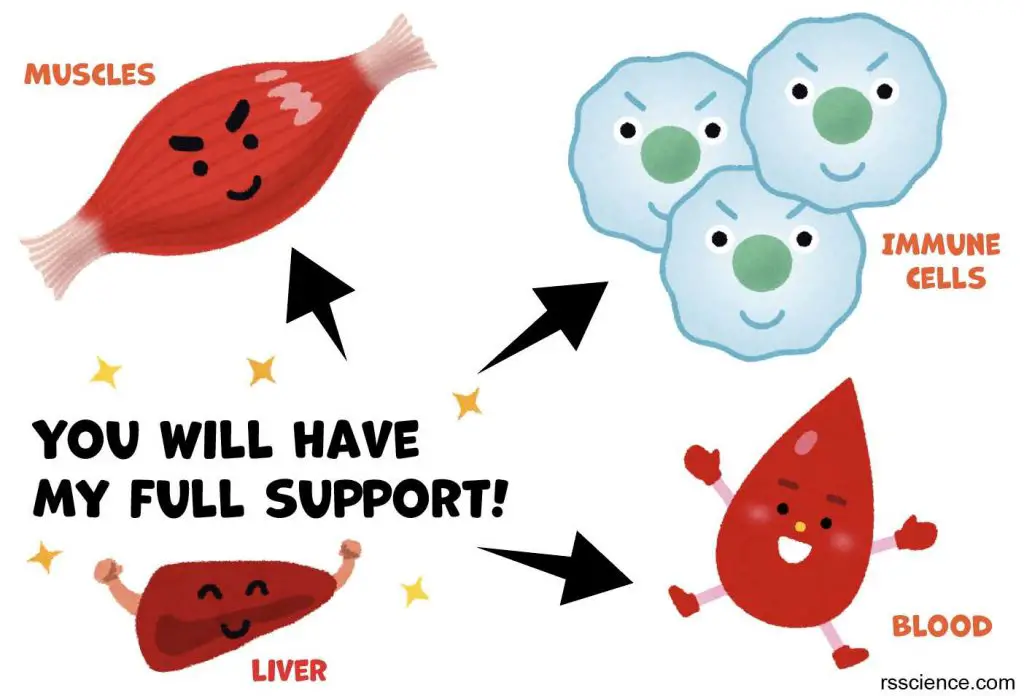
[In this image] The liver supports our bodies in different ways. Managing glucose turnover by the Cori cycle is one of them.
To meet the emergent energy demand
During trauma or after major surgery, our cells must proliferate at high speed to heal the wounds or defense the pathogens. Therefore, they have an emergent energy demand. To meet the increase in the energy flux, cells result in greater lactate production. In this situation, the liver will work hard to maintain the whole-body energy level balance by running the Cori cycle. The Cori cycle is also vital during overnight fasting and starvation.
For red blood cells
Human red blood cells contain neither nucleus, ribosomes, nor mitochondria. Removing these organelles reduces the sizes of red blood cells and allows them to pass through tiny capillaries. The lack of mitochondria makes them completely dependent on anaerobic glycolysis for ATP production. Then, the lactate produced in the bloodstream has to be handled by the liver.
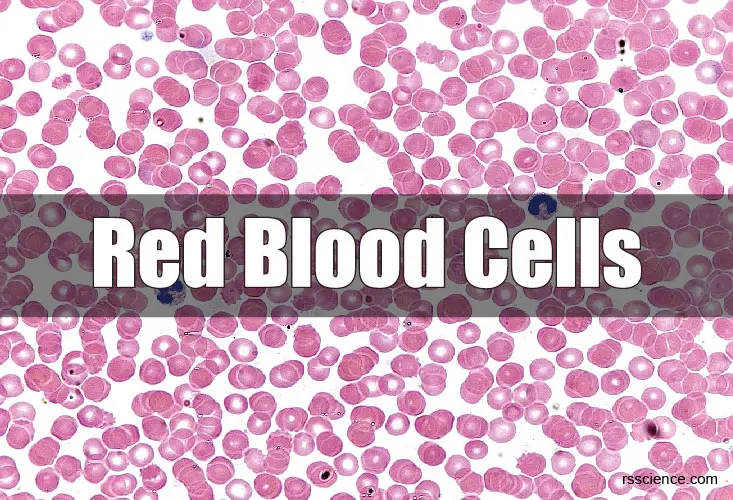
Learn more about Red blood cells.
The discovery of the Cori cycle
The Cori cycle was named after its discoverers, Carl Ferdinand Cori and Gerty Cori. Carl Cori and his wife, Gerty Cori, are pioneers in studying carbohydrate metabolism in our bodies. They defined the Cori cycle in 1929.
Carl Cori and Gerty Cori jointly won the 1947 Nobel Prize in Physiology or Medicine, not for their discovery of the Cori cycle but for their discovery of how glycogen (animal starch) – a derivative of glucose – is broken down and resynthesized in the body, for use as a store and source of energy.
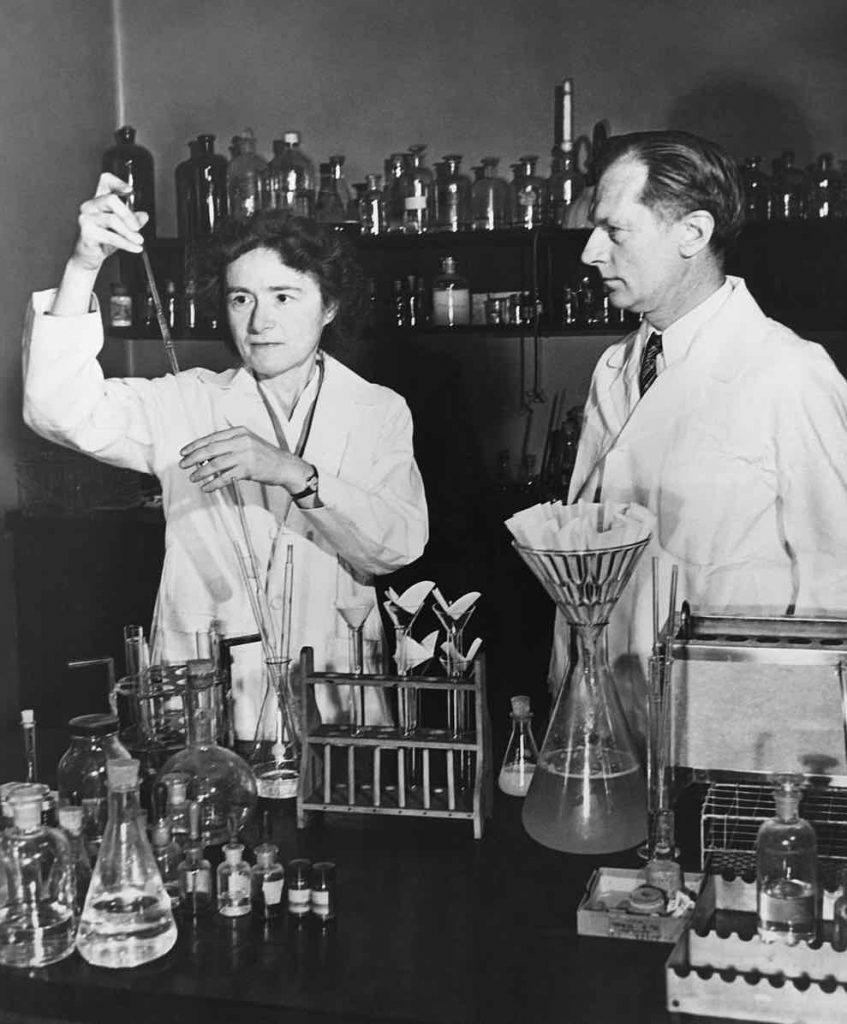
[In this image] The Cori cycle was discovered by Carl Cori and Gerty Cori, a husband-and-wife team, in 1929.
Image source: wiki
Summary
1. During anaerobic respiration, the breakdown of glucose by glycolysis produces energy. However, a byproduct called lactate is also produced in skeletal muscles. This lactate cannot be further utilized by the cells.
2. Blood transports the lactate from skeletal muscles to the liver, where the lactate is converted back to glucose by gluconeogenesis. The glucose can return to muscles to power more activity.
3. The cycling of lactate between skeletal muscles and liver is called the lactic acid cycle or the Cori cycle.
